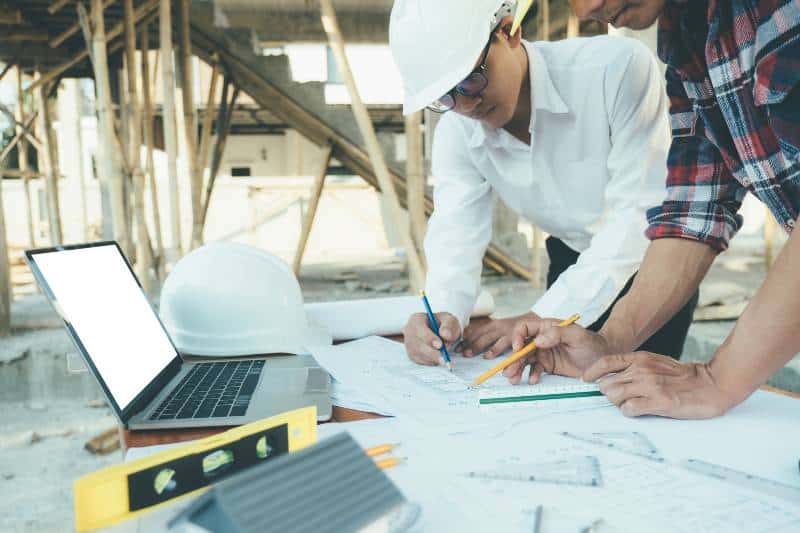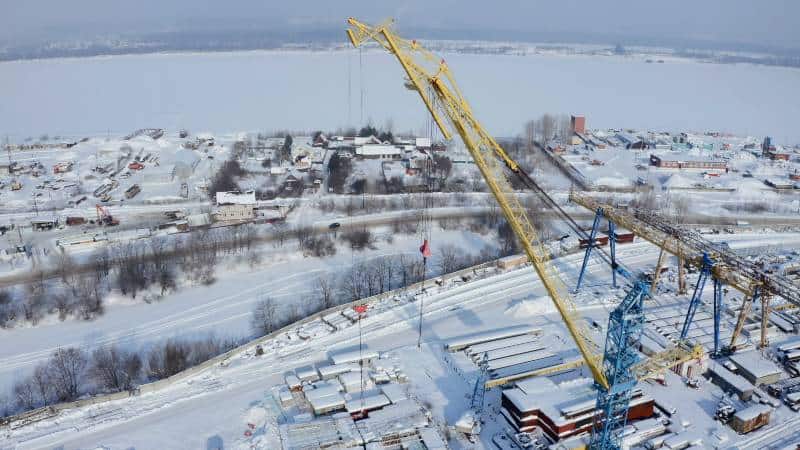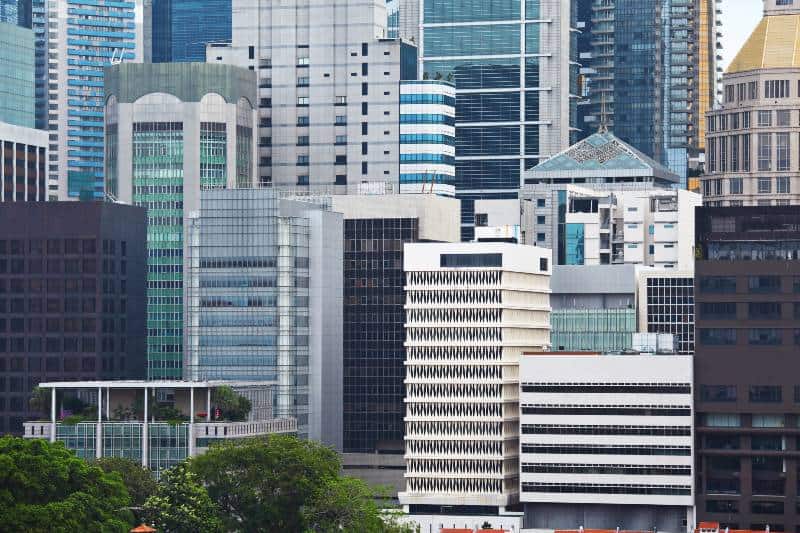When it comes to real estate, the leasing market, especially in the industrial and commercial sectors, is always evolving. With changing laws, new technologies and growing customer demands for specialized spaces; it’s important to keep up with trends related to these types of leases. From digital leasing technology to tenant improvements designed for efficiency and satisfaction; understanding various shifts in industrial commercial real estate leasing can help make sure businesses are staying ahead of industry trends. In this blog post, we’ll dive into some of the most recent changes that have swept across the industry when it comes to negotiating and signing long-term leases – giving businesses a better idea about what they should expect from their next lease negotiation process.
During Q1 of 2023, the industrial market had the second lowest vacancy rate after retail. Rental prices experienced a significant year-over-year increase of 10.3%, with the logistics sector seeing a higher increase of 11.7%.
Key Takeaways
- Industrial commercial real estate leasing is rapidly evolving, driven by factors such as rising demand, the popularity of industrial parks, the growing role of technology, and a focus on sustainability.
- Understanding these trends is crucial for businesses, investors, and real estate professionals to make informed decisions and stay competitive in the market.
- As the trends suggest, the future of industrial real estate leasing is likely to be more flexible, technologically advanced, and sustainable, shaping a new landscape for the industry.
Table of Contents

Evolution of Industrial Commercial Real Estate
Brief Historical Context
The commercial real estate industry has a rich history that stretches back for centuries, but it’s the industrial sector that truly fueled the economic development and growth of societies around the world.
Industrial Commercial Real Estate (ICRE) essentially refers to properties that are used for industrial purposes, such as manufacturing, production, research and development, storage and distribution, and other related activities.
In the early days, during the first Industrial Revolution in the late 18th and early 19th centuries, industrial properties were largely made up of factories and mills. These were often large, imposing structures built near sources of power, like rivers for water power, or in areas rich in coal for steam power. Locations were also chosen for their proximity to resources, both human and natural.
As we moved into the 20th century and the second Industrial Revolution, technological advancements led to the proliferation of the assembly line and mass production techniques.
This fundamentally changed the nature of industrial buildings – they became larger and more specialized. The key trend during this era was the development of industrial parks, which allowed businesses to share infrastructure and resources, thereby fostering mutual growth and collaboration.
The latter part of the 20th century, particularly after the Second World War, saw tremendous growth in the logistics and warehousing segment of ICRE due to the rise in consumerism and globalization. Factories were no longer required to be near city centers; instead, they were strategically located near major transportation hubs, such as highways, airports, and seaports, to facilitate the efficient distribution of goods.
Recent Changes and Their Impact
Fast forward to the 21st century, and the ICRE landscape is changing faster than ever, influenced by an array of technological advancements, socio-economic factors, and environmental considerations.
The rise of e-commerce has transformed the ICRE sector drastically. Online retailing requires significant warehousing and distribution space to store and dispatch goods, which in turn has driven the demand for larger, more efficient warehouse facilities often referred to as ‘fulfillment centers’.
Amazon, for instance, has a vast network of such centers around the globe. They’ve become high-tech structures equipped with advanced inventory tracking, automated pick, and pack systems, and in some cases, even drones and robots for package handling.
Secondly, there is a growing emphasis on sustainability and energy efficiency in the ICRE sector. Green buildings, or those constructed and operated to reduce their environmental impact, have become increasingly popular. For instance, Tesla’s Gigafactory in Nevada is a notable example of a sustainable industrial building, aiming for net-zero energy usage through a combination of solar power and energy-efficient design. This focus on sustainability not only helps reduce operational costs in the long run but also appeals to a growing segment of the market that values environmentally-friendly practices.
Another crucial trend reshaping the ICRE sector is the emergence of Industry 4.0, or the fourth industrial revolution.This revolution is characterized by the adoption of digital technologies, automation, artificial intelligence (AI), and the Internet of Things (IoT) in manufacturing and industrial practices. As a result, industrial facilities are becoming smarter and more interconnected, leading to the rise of ‘smart factories’ and ‘digital twin’ technology. These innovations allow for unprecedented levels of efficiency, quality control, and adaptability in industrial operations.
The COVID-19 pandemic has had a significant impact on the ICRE sector. On one hand, the disruption of global supply chains and the adoption of remote work has led to a decrease in demand for some types of industrial space. However, on the other hand, it has accelerated the growth of e-commerce and last-mile delivery services, thereby boosting demand for warehouses and distribution centers, especially in urban areas.
The Industrial Commercial Real Estate sector has come a long way since the first industrial revolution. Today, it stands at the intersection of physical infrastructure and digital technology, evolving to meet the demands of a rapidly changing global economy. Future developments in this sector will likely continue to be shaped by advancements in technology, sustainability considerations, and changes in consumer behavior.
Current Trends in Industrial Commercial Real Estate Leasing
Let’s delve into the current trends in Industrial Commercial Real Estate (ICRE) leasing:
Increasing Demand and What’s Driving It:
The demand for industrial spaces, especially warehouses and distribution centers, has seen an impressive surge in recent years. Primarily, this growth is fueled by the rise of e-commerce, which demands expansive storage and efficient logistics solutions to handle online sales. The COVID-19 pandemic further amplified this, as online shopping became an essential service during lockdowns. To illustrate, according to the Wall Street Journal, Amazon leased 26.9 million square feet of industrial space in the US alone during the first half of 2020.
Shift Towards Flexible Leases:
In the past, industrial leases were often long-term agreements that spanned multiple years or even decades. However, in today’s rapidly evolving business climate, tenants increasingly prefer shorter, more flexible lease terms. This is driven by the need for scalability, and the desire to remain agile in the face of changing market conditions. For example, a startup e-commerce company might prefer a shorter lease that allows them to easily upgrade to a larger facility as their business grows.
Rising Popularity of Industrial Parks:
Industrial parks are becoming more popular due to their ability to provide shared amenities and infrastructures, such as roads, utilities, and waste management facilities. They offer an efficient, consolidated environment for businesses, fostering collaboration and synergy between them. An example can be seen in the Research Triangle Park in North Carolina, which hosts more than 200 companies and provides an ecosystem of shared amenities and services.
Growing Role of Technology in Leasing:
Technology is playing an increasingly important role in ICRE leasing. This trend manifests itself in various forms, such as virtual property tours, AI-powered property management platforms, and blockchain-based lease agreements. These technologies not only streamline the leasing process but also improve transparency and accuracy. For instance, platforms like VTS and CoStar provide comprehensive data and analytics about commercial real estate, assisting both tenants and landlords in making informed decisions.
Sustainability in Industrial Real Estate:
The ICRE sector is witnessing a growing emphasis on sustainability. Tenants and investors alike are increasingly considering factors like energy efficiency, waste management, and carbon footprint when selecting properties. For landlords, making a property more sustainable can not only make it more attractive to these environmentally-conscious clients but also result in significant operational cost savings in the long run.
A prime example of this trend is Prologis, a global leader in logistics real estate, which has committed to achieving carbon-neutral construction by 2025 and operates a number of LEED-certified buildings.
The trends shaping the ICRE leasing sector are a reflection of broader shifts in the business environment and societal values. Companies are increasingly prioritizing flexibility, efficiency, technological integration, and sustainability. As such, landlords and property managers who can successfully cater to these needs will likely thrive in the evolving ICRE landscape.
Case Studies
Let’s examine a few examples of companies that are adjusting to the trends in Industrial Commercial Real Estate (ICRE).
- Amazon and the Rise of E-commerce: Amazon has been at the forefront of the e-commerce revolution and its impact on ICRE. As online sales soared, Amazon responded by leasing and developing an extensive network of warehouses and distribution centers, thereby driving demand for industrial space. These facilities, such as their fulfillment center in Shakopee, Minnesota, are often located near major cities to facilitate speedy delivery and cover a massive amount of space to store their diverse product range. Amazon’s success has led to other retailers, such as Walmart and Target, expanding their own online operations and, subsequently, their industrial real estate footprint.
- Regus and Flexibility in Leases: Although Regus is more commonly associated with a flexible office space, the concept is also applicable to ICRE. Regus provides flexible leasing options to accommodate the changing needs of businesses. For example, a small manufacturing company could lease an industrial space on a short-term basis, allowing it to scale operations up or down based on demand. This kind of flexibility is particularly attractive to startups and companies in rapidly evolving industries.
- Tesla and Sustainability: Tesla’s Gigafactory in Nevada showcases the growing emphasis on sustainability in ICRE. The factory is designed with a net-zero energy concept, using renewable energy sources like solar power to meet its energy needs. This not only significantly reduces the factory’s carbon footprint but also results in substantial cost savings in the long run. Tesla’s commitment to sustainability in its industrial facilities sets a benchmark for other manufacturers.
- Prologis and Technology Adoption: Prologis, a global leader in logistics real estate, is a prime example of how technology is reshaping the ICRE landscape. The company has adopted a data-driven approach to property management, using advanced analytics to optimize building performance and streamline leasing processes. Moreover, Prologis has been exploring the use of digital twin technology, creating virtual replicas of their properties to improve facility management and planning.
- DP World and Industrial Parks: DP World, a Dubai-based global ports operator, has made a significant commercial real estate investment in industrial parks, recognizing their potential for operational synergy and economic growth. For instance, their London Gateway Logistics Park in the UK offers an integrated supply chain solution, with state-of-the-art port, rail, and road facilities in close proximity to each other. This allows businesses located in the park to streamline their logistics operations, reducing costs and increasing efficiency.
The influence of these trends on businesses is vast and multifaceted. They affect not only where companies choose to operate but also how they design their operations and plan for growth. Companies that can adapt to these trends are often able to achieve greater operational efficiency, cost savings, and market competitiveness, while those that fail to adapt may find themselves at a strategic disadvantage.
Future Projections
Forecasting the future of Industrial Commercial Real Estate (ICRE) requires a nuanced understanding of current trends, as well as a keen eye for emerging societal and technological shifts. Here are some projected trends and their potential impacts:
Continued Growth of E-commerce: Given current data, the rise of e-commerce shows no signs of slowing down, especially in the wake of the COVID-19 pandemic. This will likely lead to sustained demand for industrial spaces, particularly warehouses and distribution centers, to cater to online retailing needs.
Impact: More developments will be designed with the needs of e-commerce in mind. These facilities will feature high ceilings for vertical storage, extensive loading dock infrastructure for efficient product flow, and advanced technological integration for inventory management and order fulfillment.
Rise of Urban Industrial Facilities: With consumers expecting faster delivery times, there’s an increasing need for ‘last-mile’ distribution centers located close to urban population centers.
Impact: We may see a rise in multi-story warehouses and the repurposing of urban properties for industrial use, resulting in a more diverse mix of property types within city boundaries.
Advancements in Industry 4.0: The fourth industrial revolution (Industry 4.0), characterized by increased digitalization and automation, will continue to shape the ICRE sector.
Impact: This will necessitate a new kind of industrial property – one equipped with the infrastructure to support technologies like AI, robotics, and IoT. ‘Smart factories’ will become more common, featuring highly automated and interconnected operations.
Sustainability Becoming the Norm: As societal awareness of environmental issues grows, the focus on sustainability in ICRE will intensify.
Impact: We’re likely to see more industrial properties featuring green design and energy-efficient operations. This could include everything from solar panels and wind turbines for onsite power generation to rainwater harvesting systems and efficient waste management.
Increased Use of Proptech: Proptech, or property technology, will become increasingly integral to the ICRE leasing process.
Impact: This will streamline leasing procedures, improve the efficiency of property management, and provide better transparency for all parties involved. AI and blockchain could play significant roles, influencing everything from property search and lease negotiation to property management and data security.
The future of the ICRE sector promises to be shaped by a confluence of e-commerce growth, urbanization, technological advancement, and sustainability focus. These trends will redefine the very nature of industrial properties, the way they are managed, and the way transactions are conducted, creating a dynamic and increasingly sophisticated ICRE landscape.

Trends In Industrial Commercial Real Estate Leasing FAQs
What role is technology playing in industrial leasing?
Technology is playing an increasingly integral role in industrial leasing. From facilitating transactions through proptech to streamlining operations with smart factories, technology is making the whole process more efficient and transparent for all parties involved.
How is sustainability impacting the industrial real estate sector?
As consumer awareness of environmental issues grows, industrial real estate developers are under increasing pressure to create green spaces that feature energy-efficient operations and sustainable design. This could include everything from solar panels and wind turbines for onsite power generation to rainwater harvesting systems.
What is the impact of the shift towards flexible leases?
The shift towards flexible leasing has had a major impact on the industrial real estate sector. This is because it allows companies to respond quickly to changing market conditions, reducing long-term costs and increasing operational flexibility. Additionally, shorter leases allow for easier access to capital and provide more opportunities for tenants.
Why are industrial parks becoming increasingly popular?
Industrial parks are becoming increasingly popular because they offer businesses the opportunity to locate their operations in close proximity to each other, allowing for operational synergy and cost savings. Additionally, these parks often have state-of-the-art port, rail, and road facilities that can further streamline logistics operations.
What are the predictions for future trends in industrial leasing?
Industrial leasing is likely to be heavily influenced by the continued growth of e-commerce, the rise of urban industrial facilities, advancements in the industry, tech-focused commercial properties, an increased focus on sustainable commercial properties, and the growing use of proptech. All of these commercial real estate trends promise to redefine the nature of industrial properties, management practices, and lease transactions.
Make sure to take a moment and read an insightful article I recently wrote about the latest Tech-Driven Strategies that are revolutionizing the field of Industrial Real Estate Management. Discover how cutting-edge technologies are being used to optimize operations, improve efficiency, and maximize profitability in this dynamic industry. Don’t miss out on this valuable resource that offers practical insights and actionable tips for professionals and enthusiasts alike. Dive deep into the world of Industrial Real Estate Management and explore the possibilities that technology has to offer!
Conclusion
The Commercial real estate market leasing is experiencing advancements and innovations right now. Companies are looking for ways to maximize cost savings and take advantage of the latest technology advancements in order to save money and remain competitive. Commercial real estate investors understand the advantages of owning industrial properties, while real estate professionals have the skills and experience to navigate these complex markets.
As a result, staying updated on trends in industrial commercial real estate leasing can help companies save time and money while protecting their investments. If you’re looking to stay ahead of the trend and want to learn more about how you can benefit from these shifts in industrial commercial real estate leasing markets, give me a call or schedule a free consultation today.




